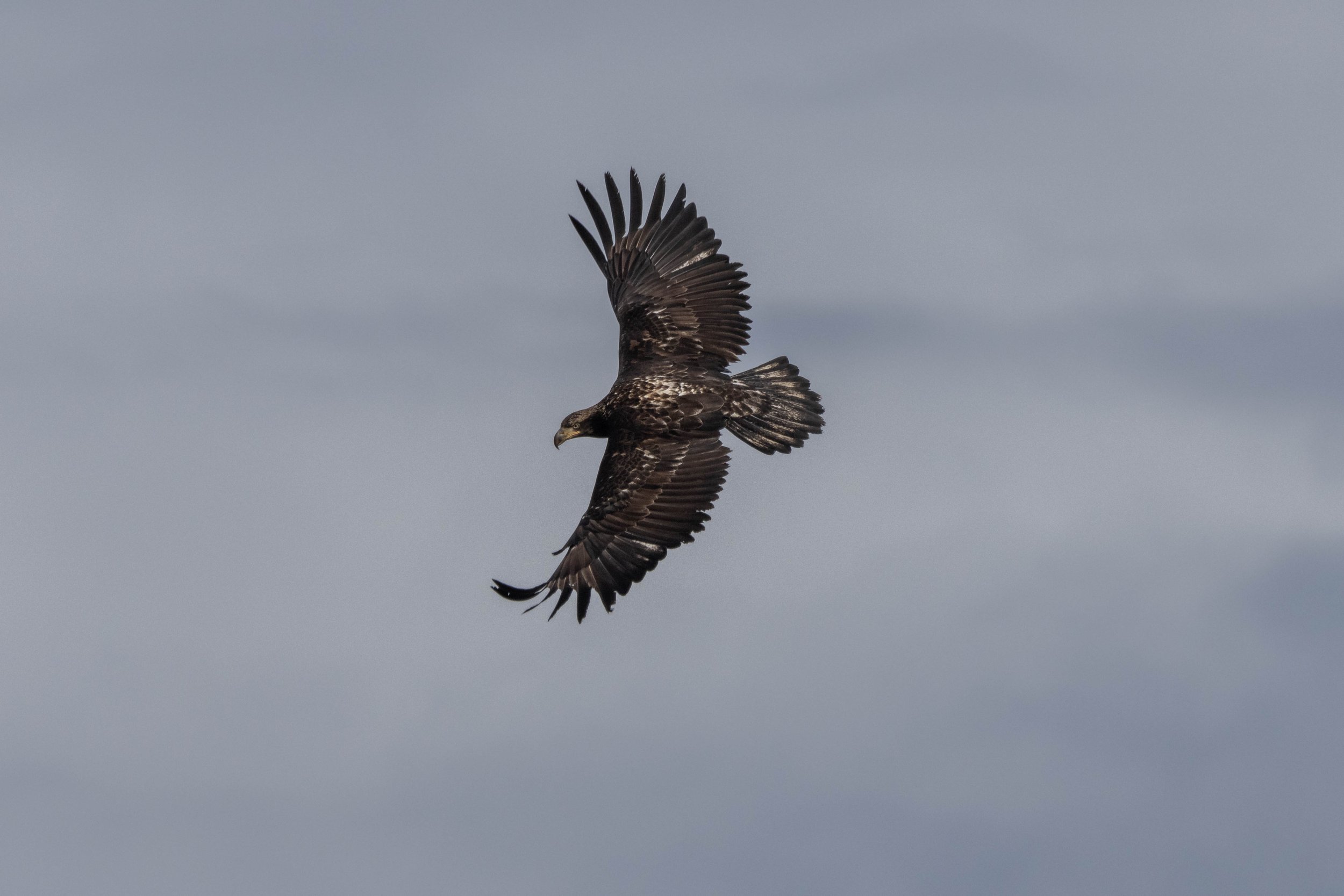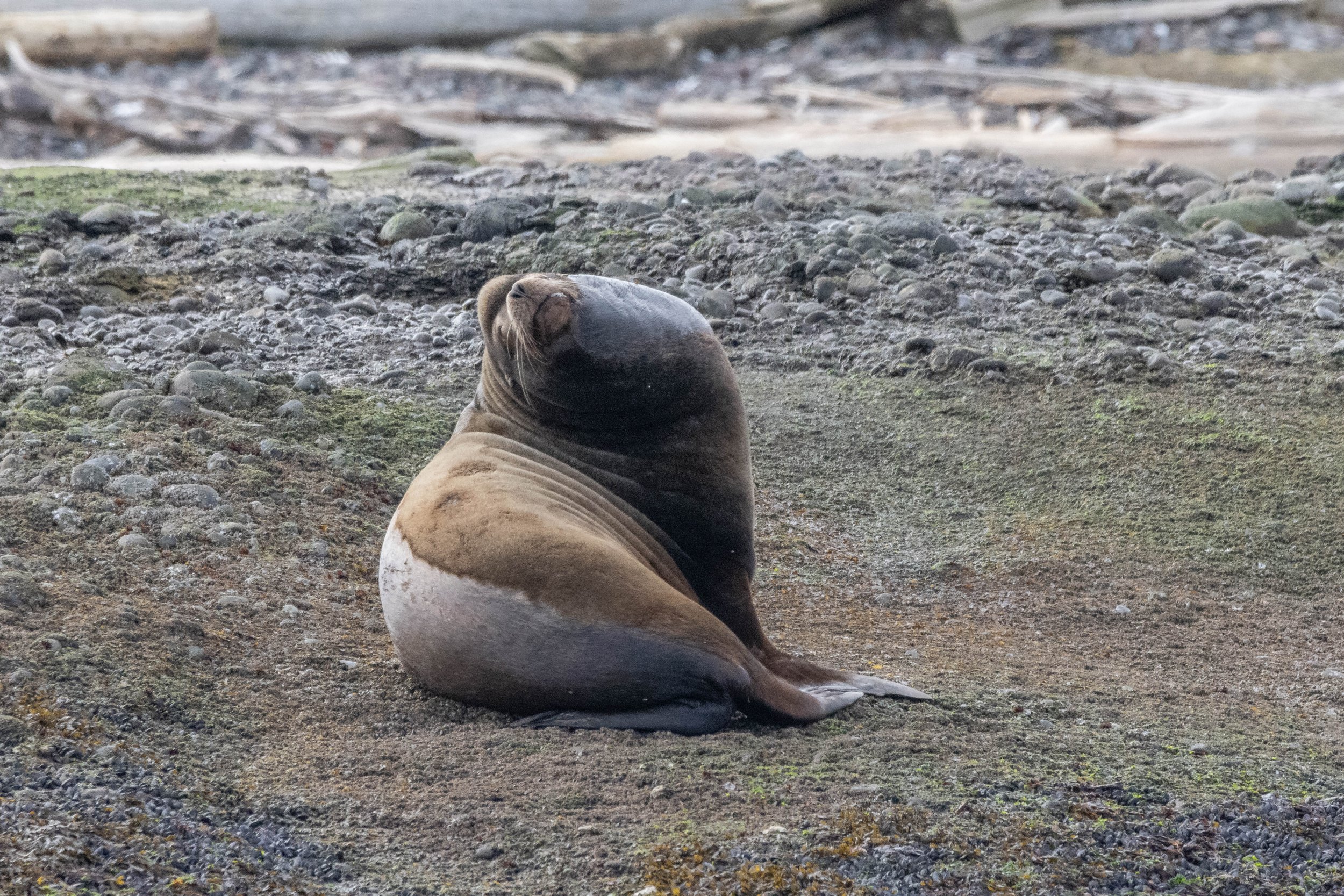March 3, 2025 - Herring Spawn!
Although it was a bit overcast as our open boat left Nanaimo, we didn’t let that dampen our spirits! Before the tour, we had heard about some early herring spawn activity to the north. We decided to head in that direction—not necessarily to see the small spawning fish, but rather to witness the wildlife drawn in by their activity!
Herring are incredibly important to our coastal ecosystem, with their seasonal arrival bringing a huge influx of nutrients. These fish are relatively small, about 26 cm (10 inches) long, but they return in massive numbers! It used to be said that when the herring returned, they were so dense you could walk across the bay without getting your feet wet. While their numbers aren’t quite that high today, hundreds of thousands still return each year to spawn.
Their spawning process is unique among BC fish, as they move right up to the shoreline to do it. Females release their eggs, which settle on rocks, seaweed, and other debris in the intertidal and subtidal zones. These eggs are sticky and adhere to the substrate. Males, on the other hand, don’t need to be as close to shore, as they release their milky “milt” into the water to fertilize the eggs. This milt gives the water a telltale turquoise appearance during a herring spawn. We were lucky enough to witness some of this phenomenon today, along with the animals taking advantage of the congregating fish.
The first wildlife we spotted were gulls, floating on the water’s surface, soaring through the air, and sometimes even fighting over a small silver fish. Next, we saw bald eagles! These iconic birds were also drawn in by the abundance of Pacific herring. We watched as they dove with their talons outstretched, hoping to snatch up fish with their precise movements. It was amazing to experience even a small part of this crucial natural event! Sometimes, herring also attract local pinnipeds, such as harbor seals and Steller sea lions, and even transient orcas. However, today it was just the birds feasting on the fish! We observed the avian action for a while before continuing on our way.
During the trip, we also encountered three pinniped species that call the Salish Sea home: Harbor Seals, California Sea Lions, and Steller Sea Lions. Although closely related, seals and sea lions are quite easy to tell apart. Here are a few key differences:
External Ears – Only sea lions have visible ear flaps; seals have just small holes on the sides of their heads.
Size – Harbor seals are much smaller than sea lions, weighing around 300 pounds compared to the 800-pound California sea lions and the massive 2,800-pound Steller sea lions.
Flippers – Harbor seals cannot prop themselves up on their flippers or walk on them. If you see a pinniped using its flippers to move on land, it’s likely a sea lion!
There are plenty of other ways to distinguish them, but these are some of the easiest to spot!
By the end of the tour, we had covered a lot of ground and seen some incredible wildlife—though no whales this time. Fortunately, everyone on board today received vouchers to return for free on a future trip! Throughout the adventure, our onboard Marine Naturalist, Vanessa Vereschahen, captured some fantastic wildlife photos, which are available to view below!
Two Adult Bald Eagles soaring overhead.
A juvenile bald eagle maneuvering in the air.
Bald Eagle midair.
This Young Eagle made a fishing attempt, but came up empty Taloned.
A Bald Eagle mixed with the gulls.
Harbour Seals enjoying their time on the rocks.
An Adult Bald Eagle overlooking the water from their rocky perch.
A California Sea Lion posing at the haul out.
Steller Sea Lions cuddled on the rocks.
Gulls fishing in the Herring Spawn.
A Eagle watching in the Distance.
A young gull floating on the water.












